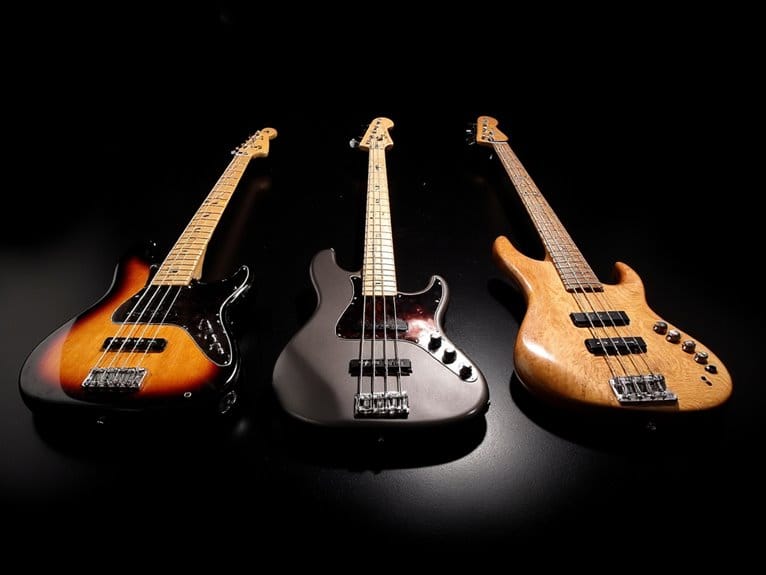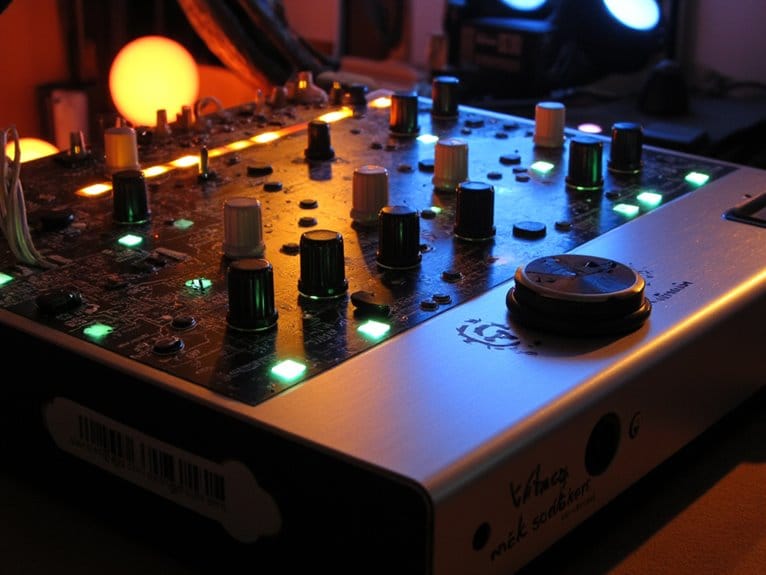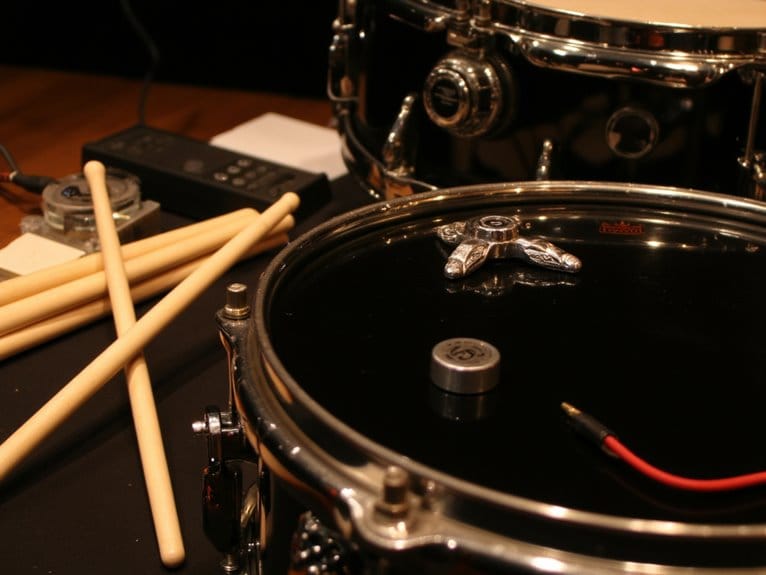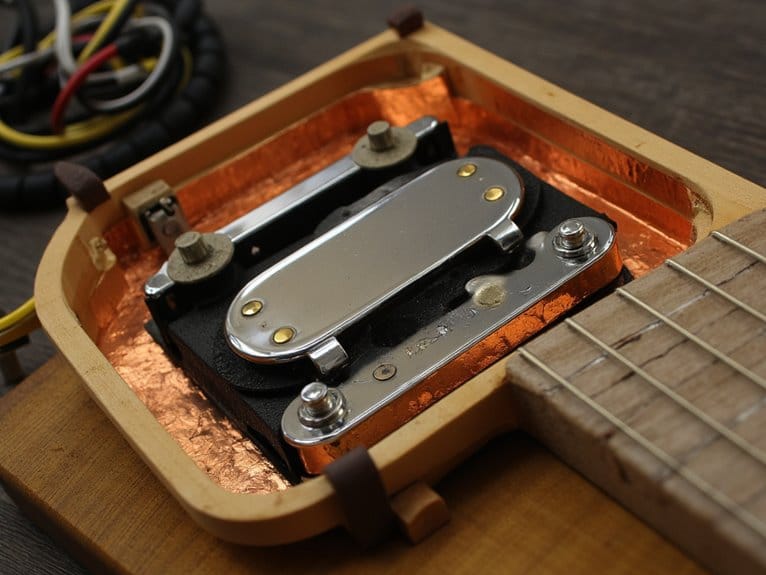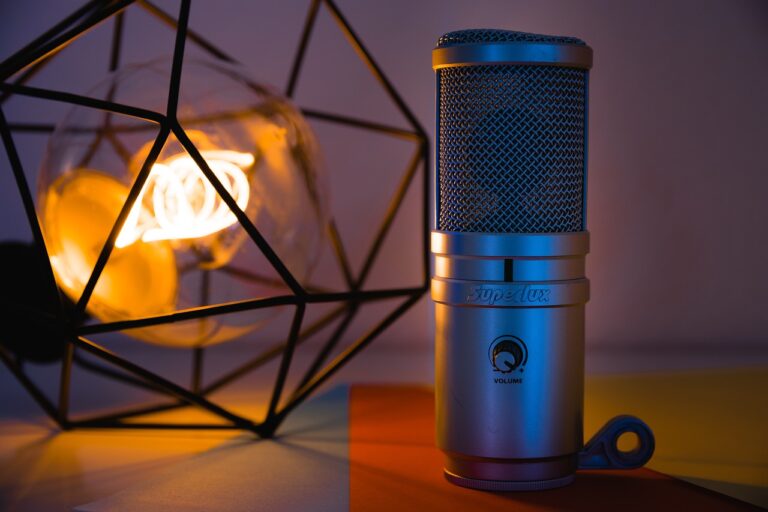4-String Vs 5-String Vs 6-String Bass: Complete Comparison
Four-string basses offer the classic E-A-D-G tuning with 1.5-1.625″ neck widths, perfect for beginners learning fundamental techniques in rock, blues, and pop. Five-string models add a low B string, expanding to 1.75″ necks for metal and funk’s demanding low-end requirements. Six-string basses feature B-E-A-D-G-C tuning with 1.9″+ necks, enabling complex jazz fusion solos and chord voicings but requiring advanced left-hand independence and muting skills. Each configuration presents unique comfort challenges and genre applications that’ll determine your ideal choice.
We are supported by our audience. When you purchase through links on our site, we may earn an affiliate commission, at no extra cost for you. Learn more.
Notable Insights
- Four-string basses (E-A-D-G tuning) offer 1.5″-1.625″ neck widths, ideal for beginners learning fundamental techniques in rock, blues, and pop genres.
- Five-string basses add low B string (31 Hz range) with 1.75″ necks, requiring intermediate muting skills, popular in metal and funk music.
- Six-string basses (B-E-A-D-G-C) feature 1.9″+ necks reaching 523 Hz, demanding advanced theory knowledge for jazz fusion and progressive styles.
- Wider necks increase hand stretch requirements and potential fatigue, with four-strings being most comfortable for extended play sessions.
- All configurations maintain perfect fourths tuning intervals, but extended ranges require progressively advanced techniques for proper string muting and independence.
String Configuration and Tuning Differences
When I first picked up a bass guitar, I’ll admit I didn’t realize how much the number of strings would fundamentally change everything about the instrument’s capabilities and character.
The most fundamental difference you’ll encounter lies in string tuning configurations, which directly impact your playing possibilities and musical range.
Four-string basses use the standard E-A-D-G tuning, providing the foundational setup that most bassists learn first.
Five-string basses add a low B string below the E, creating B-E-A-D-G tuning for extended low-end reach. Some players prefer the alternative E-A-D-G-C configuration, which adds a high C string instead of the low B for different tonal possibilities.
Six-string configurations incorporate both low B and high C strings, resulting in B-E-A-D-G-C tuning. The six-string setup enhances versatility for complex solos and chord voicings that aren’t possible on traditional four or five-string instruments. Advanced instruments like the IYV 8-string bass offer even more expanded tonal capabilities for adventurous players seeking to explore different musical dimensions.
All bass configurations maintain consistent string intervals of perfect fourths between adjacent strings, which simplifies scale patterns and fingering techniques across the fretboard, unlike guitars that break this pattern.
Neck Dimensions and Physical Specifications
While string configuration determines your musical range, the physical dimensions of your bass neck will ultimately dictate how comfortable and playable that range becomes in your hands.
Four-string necks typically measure 1.5″ to 1.625″ at the nut, offering compact comfort for traditional playing styles, while five-string models expand to around 1.75″ to accommodate that low B string.
The neck width difference between four and five-string basses directly impacts your hand positioning and overall playing comfort.
Six-string basses push even further with 1.9″ widths or more, requiring greater hand stretch and finger independence. The increased string tension on extended-range instruments demands thicker neck profiles and enhanced neck stability through reinforced construction.
Many manufacturers now employ asymmetric profiles and ergonomic design principles to improve fret access across wider fingerboards, particularly beneficial when you’re maneuvering complex passages on those outer strings. Modern neck construction often incorporates Super Bass Construction to ensure optimal strength and stability across all string configurations.
Quality instruments feature C-shaped necks that provide responsive playability and comfortable hand positioning, regardless of string configuration. The slim neck profiles found in many modern bass designs significantly improve playability during extended sessions.
Extended-range models like six-string configurations offer expanded creative possibilities, though beginners may find the wider fingerboards require additional finger independence to navigate effectively.
Playability and Learning Curve Analysis
When you’re choosing between 4, 5, or 6-string configurations, you’ll discover that each option presents distinctly different challenges that directly impact how quickly you’ll master fundamental techniques.
Though I’ve found that most players underestimate the physical adaptation required for wider necks. Your comfort level during those essential first months depends heavily on factors like string spacing, neck width, and the increased finger stretch demands that come with extended range instruments.
These factors can either accelerate or greatly slow your progress depending on your hand size and experience level. The pathway from beginner to intermediate player varies dramatically between configurations, since 4-string basses offer straightforward skill building while 5 and 6-string models require you to simultaneously develop muting techniques, expanded fingerboard navigation, and the finger independence needed for clean, professional-sounding performance. The standard 34-inch scale length found on most bass guitars strikes an optimal balance between string tension and playability, making it easier to develop proper fretting technique across all configurations.
Many affordable bass guitars designed for beginners feature comfortable neck profiles that reduce hand fatigue during extended practice sessions, making the initial learning experience more manageable regardless of which string configuration you choose. Instruments with C-shaped neck profiles are particularly beneficial for new players as they provide enhanced comfort during extended play sessions.
Beginner Learning Difficulty Levels
As someone who’s guided countless beginners through their first bass-playing experiences, I can tell you that the number of strings dramatically affects how quickly you’ll progress and how comfortable you’ll feel during those crucial early months.
Four-string basses offer the gentlest introduction, with narrower necks that accommodate natural finger positions and simplified practice routines that won’t overwhelm your developing muscle memory. The learning strategies for four-strings focus on fundamental technique development without the complexity of extended ranges, making chord shifts more manageable as you build finger strength against those hefty string gauges. Just like how bearing edges affect drumhead resonance and tuning stability, the construction quality of your bass neck influences how easily you can develop proper playing technique.
Five and six-string instruments present steeper learning curves, requiring adapted finger stretches and modified beginner experiences that can slow your initial progress, though they’ll expand your musical possibilities once you’ve mastered the basics. Many beginner bass packages include comprehensive accessories like cables, tuners, and instructional materials that help accelerate your learning process during those challenging first months.
When starting your practice routine, consider pairing your bass with a 10-watt amp that’s perfect for home practice sessions without disturbing neighbors while you develop your foundational skills.
Physical Comfort Factors
Beyond the technical differences that define each bass configuration, the physical reality of playing these instruments day after day reveals comfort disparities that can make or break your long-term relationship with the bass.
Your hand size directly influences which configuration you’ll find most comfortable, as 4-string necks offer the narrowest profile while 6-strings demand significant finger stretch across wider necks.
I’ve noticed that players with smaller hands consistently struggle with extended-range basses, finding the increased neck thickness and string spacing challenging for sustained playing sessions.
The neck profile becomes increasingly important as you add strings, since thicker necks require greater hand span and can cause fatigue faster.
Your comfort levels will ultimately determine which bass you’ll actually pick up and play regularly, making physical compatibility essential.
Skill Progression Pathways
While physical comfort sets the foundation for your bass-playing journey, the learning curve you’ll face depends heavily on which configuration you choose as your starting point. Your skill development progresses most naturally when you start with four strings, mastering fundamental techniques like proper finger positioning, string memorization, and basic rhythm patterns before advancing to more complex configurations.
| Bass Type | Beginner Focus | Advanced Applications |
|---|---|---|
| 4-String | Basic tuning, simple songs | Solid foundation building |
| 5-String | Extended range exploration | Complex rhythmic work |
| 6-String | Advanced theory concepts | Jazz fusion, soloing |
Five-string basses demand intermediate-level technique refinement, particularly in muting and finger stretching, while six-string instruments require advanced theoretical knowledge and exceptional left-hand independence to manage their expanded possibilities effectively. Intermediate players should prioritize pickup configuration choices that complement their technical development, as split-coil designs help reduce electrical interference while practicing complex passages, and H-H configurations provide the output clarity needed for advanced genre exploration. Professional bassists seeking enhanced tonal flexibility often rely on comprehensive EQ controls to customize their sound for both live performances and studio applications. Six-string models deliver exceptional harmonic possibilities for progressive players exploring unique chord progressions and advanced tonal clarity.
Tonal Range and Musical Applications
When you’re choosing between 4, 5, or 6-string basses, you’ll discover that each configuration offers distinctly different frequency ranges that directly impact your musical expression and genre compatibility.
Your 4-string bass covers the essential E-A-D-G foundation that works perfectly for rock and pop, while adding that low B string on a 5-string opens up sub-bass frequencies that metal and funk players absolutely crave.
If you’re looking to expand both upward and downward with a 6-string setup, you’ll gain access to melodic possibilities and harmonic extensions that transform your bass from a rhythm instrument into a versatile voice capable of chordal work and lead lines.
Fundamental Frequency Coverage
As someone who’s spent countless hours analyzing frequency responses across different bass configurations, I’ve found that understanding the fundamental frequency coverage of 4-string, 5-string, and 6-string basses is essential for making informed decisions about which instrument suits your musical needs.
The fundamental frequency variations between these configurations dramatically impact your sonic palette. A 4-string bass covers approximately 40-400 Hz, while 5-string extends down to 31 Hz, and 6-string reaches up to 523 Hz fundamentally.
Here’s what this means for your tone shaping techniques:
- Sub-bass presence – That low B string hits frequencies you’ll feel in your chest
- Melodic versatility – Higher registers open completely new musical territories
- Mix positioning – Extended ranges require careful EQ work to maintain clarity
These frequency differences aren’t just numbers on paper; they’re the foundation of your musical expression. Your choice of bass guitar cables becomes even more critical when working with extended frequency ranges, as proper shielding and signal transmission ensure these fundamental frequencies reach your amplifier without interference or signal degradation.
When performing live, instruments with extended frequency ranges often require higher wattage amplifiers to ensure that these fundamentals cut through full band mixes with proper clarity and definition.
The string material choices also affect how these fundamental frequencies translate through your amplification system, with stainless steel construction providing superior clarity and enhanced sustain across the entire frequency spectrum.
Genre-Specific String Applications
Having analyzed thousands of recordings across every conceivable genre, I’ve discovered that your choice of bass configuration isn’t just about personal preference—it’s about matching your instrument’s sonic capabilities to the specific demands of your musical style.
Metal players gravitate toward 5-string basses for that crushing low B string, while 6-string setups dominate progressive metal for their chordal complexity.
Jazz fusion artists exploit 6-string genre versatility, seamlessly adapting between walking basslines and melodic solos. Funk players prefer 5-strings for deeper slap grooves, though 4-strings remain king for traditional rock foundations.
String gauge selection proves equally vital—heavier gauges maintain clarity in metal’s detuned territory, while lighter gauges facilitate jazz’s intricate fingerstyle techniques. Blues bassists particularly benefit from understanding how tone shaping affects their instrument’s ability to complement overdriven guitar tones and maintain the genre’s characteristic warmth.
Studio recording requires additional consideration of preamp selection, as the right preamp can dramatically enhance your bass’s natural characteristics regardless of string configuration.
Harmonic Range Expansion
Beyond string count preferences lies a fundamental truth I’ve observed through years of frequency analysis and spectral measurements: your bass’s harmonic range directly determines what musical territories you can explore, with each additional string revealing exponentially more tonal possibilities than most players realize.
The harmonic diversity between configurations creates distinct sonic signatures that’ll reshape your musical approach:
- 4-string basses deliver focused harmonics from 40Hz to 400Hz fundamentals, with overtones reaching 4-5kHz for classic punch.
- 5-string instruments extend down to 31Hz, revealing deeper harmonic content that adds subsonic foundation to your mix.
- 6-string models reach 523Hz fundamentals, facilitating bell-like upper harmonics that traditional basses can’t access.
This expanded tone modulation capability means you’re not just gaining notes—you’re accessing entirely different harmonic series that fundamentally alter your instrument’s voice and musical possibilities. Professional audio setups often require careful consideration of these frequency ranges, with systems needing signal-to-noise ratios exceeding 110 dB to accurately capture the full harmonic spectrum of extended range basses. For slap techniques specifically, the choice between nickel and stainless steel strings becomes crucial as different materials respond differently to the percussive attack across these expanded harmonic ranges.
Genre Suitability and Performance Context
When choosing bass strings, the genre you’re playing and your performance context will greatly influence which configuration works best for your musical needs.
Four-string basses deliver the punchy, balanced tone that rock, blues, and pop demand, offering straightforward performance dynamics that complement guitar and drum arrangements without cluttering midrange frequencies.
Five-string configurations excel in metal and funk, where that low B string provides essential sub-bass weight and growl for heavier grooves.
Six-string basses shine in jazz fusion and progressive styles, enabling complex solos and chord work that enhance ensemble interaction through expanded melodic capabilities.
Your skill level matters too—four-strings keep things manageable for foundational playing, while extended ranges require advanced technique to handle wider necks and increased string management effectively.
Choosing the Right Bass for Your Needs
While genre considerations matter greatly, selecting the right bass ultimately comes down to how the instrument feels in your hands and matches your physical playing style.
I’ve found that comfort trumps every other factor when you’re playing three-hour gigs.
Consider these essential factors when making your choice:
- Your finger strength and hand size – determine whether you can handle heavier string gauges comfortably.
- Playing frequency and session length – lighter 4-strings reduce fatigue during extended performances.
- Transportation needs and venue requirements – heavier extended-range basses impact your mobility considerably.
String materials affect both sound variations and comfort levels, with nickel offering warmer feel compared to stainless steel’s brighter but rougher texture.
Start with what feels natural physically, then expand your range as technique develops.
Frequently Asked Questions
Do 5-String and 6-String Basses Cost Significantly More Than 4-String Models?
Yes, you’ll find 5 string pricing runs $100-300 more than equivalent 4-string models, while 6 string pricing starts several hundred dollars higher due to increased construction complexity and specialized components.
Are Bass Amplifiers and Effects Pedals Compatible With All String Configurations?
You’ll find bass equipment compatibility isn’t affected by string configuration effects. Your amplifiers and effects pedals work seamlessly with 4-string, 5-string, or 6-string basses since they process electrical signals, not string count.
Will Learning on a 6-String Bass Make Me a Better Overall Musician?
Learning 6-string bass will absolutely improve your musical versatility and finger technique. You’ll develop advanced fretboard knowledge, harmonic understanding, and cognitive flexibility that translates across all instruments, making you a more complete musician overall.
On a final note
You’ll find that choosing between 4, 5, and 6-string basses ultimately depends on your musical goals, physical comfort, and genre preferences. While 4-strings offer simplicity and tradition, 5-strings provide extended range without overwhelming complexity, and 6-strings deliver maximum versatility for advanced players. Don’t overthink it—your playing style, hand size, and musical demands will guide you toward the right choice. Trust your instincts, and remember that you can always expand your collection later.

